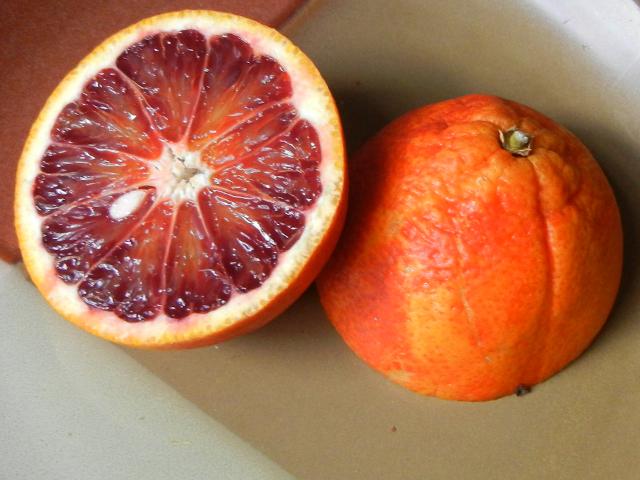Blood Orange, Sliced in album produce
In Albums: food fruit produce citrus

Jun 27th, 2011, by Alex Zorach
This photograph shows a blood orange which I bought at the Reading Terminal Market in Philadelphia. This particular batch of oranges was grown in Italy, and was sold for the price of 2 for $1, inexpensive given their size. Blood oranges tend to be much more expensive than regular oranges, and are also available only sporadically.
The first time I tried a blood orange I did not enjoy it; I found it had a peculiar flavor that was not what I was expecting. However, I have since become a huge fan of these fruit, and they are now one of my favorite types of citrus. Blood oranges are not just a peculiar citrus with a red color, I find they are actually a very pleasant variety of orange for reasons other than their color as well. I find them easy to peel, yet they have thick skin and keep relatively well. The sections come apart easily and the white membrane is easy to remove. Blood oranges also tend to have a much softer texture than most oranges. They tend to be on the smaller size but you can occasionally find ones, such as these, which are similar in size to an average Valencia orange or a larger Navel orange.
Blood oranges originated as a mutation of the regular sweet orange plant. The color in blood oranges comes from a family of pigments called anthocyanins, which are the same chemicals that give many raspberries (particularly evident in black raspberries) their rich purple color. Interestingly, I find that the flavor and aroma of a blood orange is slightly suggestive of raspberries, which may be psychological, but may also reflect the fact that these two fruits do share certain chemical components in common.
Interestingly, another reddish-colored variety of orange, the Cara Cara orange, does not contain anthocyanins, but rather, lycopene, the same pigment that makes tomatos red.
You can also view a closeup of the flesh of this orange.